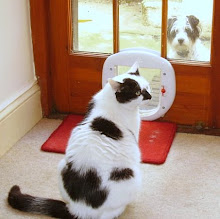In October's issue of Cornwall Today -
LEARN TO SABRE FENCE - A GREAT WAY FOR ANYONE TO GET FIT!
I've always been attracted by fencing for its skill, elegance and drama, so when I had the chance to try it out, I jumped at it. Arriving at Truro Fencing Club I was greeted by Maxine McCombie, a diminutive figure bouncing with fitness, who started fencing 6 years ago at the age of 23. She is a TFC club coach and ranked 10th in the nation in the Sabre category. “Fencing attracts many women - it's good for improving general fitness, co-ordination and agility,” she explained.
Jon Salfield, Head Coach, joined us as we watched the Performance Programme in training. “We have 7 people training towards the 2012 Olympics and aim to offer the most comprehensive sabre training available in the UK,” he said. This gives athletes the tools to achieve world-class results, and build a pathway for future generations of international fencers. “Truro Fencing Club have already achieved great successes and hope to build on these.”
But TFC are also a very inclusive and friendly club, keen to encourage fencers of all ages and abilities. Even crocks like me!
Jon explained, “Sabre fencing is such a dynamic sport. You only have a knife edge of time in which to hit the other person so you have to be so focused. You need to concentrate 110% of the time.”
I wondered if my brain cells were up to it, but after showing me the electronic scoring device, Maxine took me to the far end of the gym to put on the kit. “Fencing is very safe because we use safety equipment which is regularly updated,” she explained, and showed me the pieces of kit that beginners wear. “A chest protector (for women), a plastron, or under-jacket for the sword arm, and a jacket which is worn over the top made of Kevlar based material.” All of this is very lightweight cotton but, apparently, made of the same technology as bullet proof vests!
Next came a white glove like a gauntlet, worn on my sword hand and lastly, but most important of all, a mask made of very strong steel with a bib to protect the neck.
First of all Maxine showed me the salute, which is an integral part of fencing. “As it's a combat sport we acknowledge respect for our opponent.” I had to point my sword down towards the floor then bring it straight out in front, then bring the guard up to my nose and back down. “You salute your opponent before and after your fight and also salute the referee and salute at sword point. It's not a violent sport: you try and outwit your opponent.”
Once kitted up, Maxine explained the three types of sword in fencing. “The sabre is used with a cutting action of what would have been a cavalry sword to hit your opponent, whereas with the other two swords, the foil and epee, you can only use the tip.” We were to use a sabre which is a relatively new competitive sport for women, starting at the Olympics in 2004.
First of all she showed me how to place my thumb and hold the sword up in the air. Next came foot work which is quite specific. “As you're right handed, put your right foot forward and always keep it straight,” said Maxine. “Then your back foot turns out to the side at a right angle giving an L shape, then you bend both knees. That's your en garde position so that when you do your lunge you have a good starting position, and your sword comes out at the front.”
She showed me how to move my front foot forwards, then the back foot, and to move backwards start with the back foot, then the front foot. All footwork is a variation on this step, using different patterns and rhythms depending on how the fight's going.
Next came the lunge; the long attacking action. “Your back foot stays flat on the floor and you push forwards into a long stretch and your front knee is bent over your ankle. To get out of it you push backwards into the en garde position. Well done!” I glowed at the praise, though having done both ballet and yoga was a help.
Just when I thought I was making progress, we moved on to attacking. “In sabre the target area is everywhere above the hip line: arms, chest, head, even the sides and back, apart from the hands,” Maxine told me. First I had to hit her on the head, then the chest with the original cutting edge of the sword, and she showed me how to put up my sword to stop a hit. “The three areas to be hit are the head, chest and flank. So you need three main defense blocks, using your sword to stop your opponent hitting you. This is called a parry.”
A parry signifies the end of an attack, then it's time for the opponent to attack. She showed me another way to stop your opponent which was easy: “Step back, out of the way.”
Having shown me the sword work, I then added the footwork, stepping backwards to avoid Maxine, then lunged to attack her. I wanted to know when you hit each other? “When you move forwards, you have the attack,” said Maxine as our swords clashed – she's a very clear and patient coach.
“As soon as you've made me miss or defended, then it's your attack and I have to defend myself, so priority is given to the attack. You can't just hit.” So that cleared that up.
“You're constantly working with the balance of attacking without getting too close,” explained Maxine. “Basically it's attack, parry and change of rhythm.”
I could see that in fencing concentration is vital, as is timing, footwork and lightning-quick reactions. Maxine nodded. “I love the competitiveness and the activity: it's adrenaline fueled but you have to keep your head working. You compete against yourself to improve and your opponent, so they push you to deliver your best fencing.”
By this time I was on an incredible high and my head was spinning: I'd never realised fencing was so complex. But Jon and Maxine are excellent ambassadors of the sport. Their enthusiasm is so contagious, you really want to have a go.
www.trurofencing.co.uk or ring Jon on 07779 130942.
info@trurofencing.co.uk
Truro Fencing Club was founded in 1970 and now has over 100 members. It costs £25 per month or £15 for children for 2 practices per week, overseen by 5-6 coaches and includes clothes and equipment. The club meets on Mondays, Tuesdays and Thursdays and new members of any standard are welcome.
FACTBOX
Fencing can be traced back to the 12th century and was one of the disciplines at the very first Olympics in 1896.
Sabre
The fastest of all the fencing weapons, and the only one which uses cutting actions as well as point attacks. The sabre is descended from the eighteenth and nineteenth century heavy cavalry sword. The target for sabre is above the waist, and simultaneous hits (within 120 milliseconds) are decided by 'right of attack'. Any contact is a valid hit at sabre, ie. no particular level of pressure is required to score a valid hit.
Epee
Heavier than the foil and with a larger guard, the epee is descended from the dueling rapier of the sixteenth and seventeenth century. Hits can be scored anywhere on the body and must be made with the point. For a hit to be valid it must be delivered with at least 750 grams of pressure (this is detected by a spring loaded tip which is wired to an electronic scoring box). Simultaneous hits score one point each.
Foil
A light weapon, developed from the small-sword of the eighteenth century. Hits are made on the torso with the point, and simultaneous hits are governed by 'right of attack'. This means that the fencer who initiates an attacking movement will score the hit, unless the defender first deflects the opponents blade, or makes it miss. For a hit to be valid it must be delivered with at least 500 grams of pressure (this is detected by a spring loaded tip which is wired to an electronic scoring box).
Subscribe to:
Post Comments (Atom)














22 comments:
I've always thought it looked a great sport... I like the discipline of it. Great article.
JJ - glad you enjoyed it. It was certainly fun to do!
I love watching people fence. My ex-step-father used to teach in South Africa.
I've always admired fencing as a graceful sport. Clever you, and I'm glad you enjoyed it. :)
Debs - it's a very watchable sport isnt it?
Oh, I thought you meant the other sort of fencing at first and was a bit worried. Sounds great but requiring of far too much co-ordination for me!
Blimey! You get to do some great things!
Ak - I don't think I was graceful but it was fun!
Chris - I couldnt do the other kind of fencing - I'd be covered in splinters and bashing nails into my hand!
Elaine - sometimes I wonder what I've let myself in for!
I'm tired just reading about your fencing day, but it sounds exciting. And totally like something I'd love for a character to do, or maybe learn over the course of a book.
Did you find a few muscles that you hadn't used in awhile?
When I crawled back on a back, after a long sabbatical, I found muscles that I was sure hadn't existed previously in my body. No, it's the truth. I've never had those muscles before. I'd remember anything that hurt so greviously!
I'll need to look around on this side of the pond and see if any here, this far in the deep south, even know what fencing entails, much less know how to teach.
Have a wonderful weekend.
I'm impressed. And you are right about the fitness. You would need strong thighs to keep jumping up in a jete, if you get my drift.
Sandra - it would be great for a character in a novel as there's so much they could learn! I was OK the next day, but a killer was when I went riding for the first time in 25 years - I couldnt sit down for a week afer that!
Ellee - I can see you'd get very fit being a fencer!
Great article, Flowerpot
Must be the time of year. A friend of mine has just taken up pole dancing.
Pole dancing, Pat - I love it! I shall suggest that to my editor next and watch her face carefully!!!
I've tagged you for an award over at mine.
Thanks Debs! Heading over your way..
Fascinating post, FP, and written in such a way as to make me want to have a go immediately! I will search for local clubs tommorow. Please keep us informed of your progress and a pic too??
I hope you continue to fence and write about it often.
I would enjoy reading your about your progression.
Phil - oh do hae a go and let me know how you get on!
Gray Epee - how wonderful to meet a proper fencer! It looks a fascinating sport. Look forward to hearing your progress too!
Post a Comment